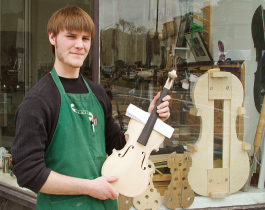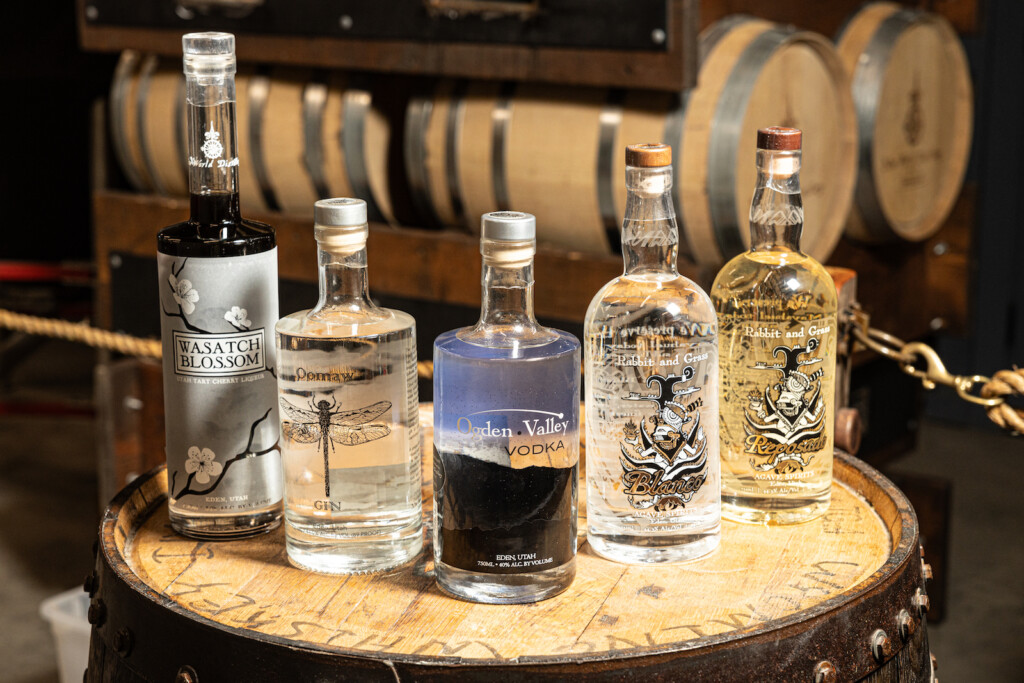“No one comes here because they want to be rich; we all come here because we love music,” says John Nickels, a student at the Violin Making School of America in Salt Lake City. “Anyone who wants to go here better want to do this as a profession or a very serious hobby,” he adds.
About the YouTube video short documentary film above:
Richard Markosian (Editor and Publisher of Utah Stories) attended the University of Utah majoring in documentary film and journalism. This film was produced in his beginning film making class. Spending three weeks gathering footage Markosian filmed student/teacher Boris Odio de Granda, watching him show all of the various steps to producing a violin from start to finish. This film was produced in the spring of 2001, when the School was called Peter Prier and Sons Violin Making School.
John claims that the Violin making School of American, founded by Peter Prier, is one of the best violin making schools because of instructors like Charles Woolf, who is also the owner and director. They follow traditional methods of violin making and copy the Stradivarius model.
John lived in a small rural town in California when he first became interested in violins. There were no music shops in which to buy or fix any instruments. So he ordered a violin online and taught himself to play. When he broke a piece of his violin while changing strings, he fixed it himself with a bent coat hanger.After that he started doing repairs in his home and fixing violins for others.

“I was just kind of born to do it,” he says.
John is near the end of his second year of school. First year students make two violins. It takes nine months to finish them. By the end of the third year, they can hopefully make two violins in three months.
“There’s a delicate balance between working quickly and efficiently,” says Nickels. “One simple mistake can set you back several weeks.”
For example, students must match up two pieces of spruce from part of the same tree and join the boards using hide glue made from ground hide and hooves. Some people have trouble joining the plates. Others have trouble making the “F,” or, sound holes. It all comes down to style.
“It’s very tedious, but it’s also very rewarding,” Nickels says. “You have to be an optimist. If not, you’re just going to complain.”
It’s all about the artistry. Some people have eyes trained, but their hands aren’t trained yet. “Basically what it comes down to is having a link between your eyes and your hands,” he says.
It’s not carpentry, such as cabinet making. It resembles sculpting.
“It’s part music. I can’t really describe it,” he says. “You tap the plates, hear the wood. It makes a certain sound.”
Nickels says your eyes, hands, brain, and heart must be coordinated perfectly to get what you want. It’s not thinking. It’s symbiosis. Nothing else in the world matters when you’re making a violin.
“Just focus on enjoying it and it’ll come out at least decent,” he says. “Keep doing it and your hands will catch up with your eyes.”
The average price for a modern, handmade violin is $15,000 to $20,000. According to John, you need to make ten to twenty violins before you approach mastery.

“Becoming an expert takes many years of work, talent, and maybe a little luck,” he says.
Many students work in a shop after graduating. Once they hone their craft, they can start their own shop or work from home and continue crafting beautiful looking and sounding instruments that are works of art. §






